Related Research Articles
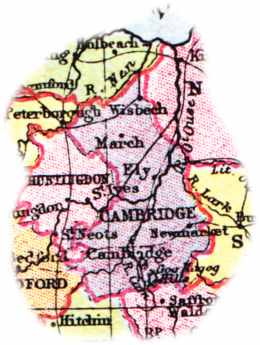
The English county of Cambridgeshire has a long history.

Water Newton is a village and civil parish in Cambridgeshire, England. Water Newton lies approximately 5 miles (8 km) west of Peterborough. Water Newton is situated within Huntingdonshire which is a non-metropolitan district of Cambridgeshire as well as being a historic county of England. As the population of the village was 88 only at the 2011 Census it is included in the civil parish of Chesterton.

Abbots Ripton is a village and civil parish in Cambridgeshire, England. Abbots Ripton is situated within Huntingdonshire which is a non-metropolitan district of Cambridgeshire as well as being an historic county of England. Abbots Ripton lies approximately 4 miles (6 km) north of Huntingdon on the B1090.

Teversham is a small village in Cambridgeshire, England about 2 miles (3 km) from Fulbourn and about 3 miles (5 km) from the centre of Cambridge. It is smaller than neighbouring villages. Although just a few hundred metres from the edge of Cambridge it is bordered by farmland on all sides.

Kirtling, together with Kirtling Green and Kirtling Towers, is a scattered settlement in the south-eastern edge of the English county of Cambridgeshire. It forms a civil parish with the nearby village of Upend to its north. The population of the settlement is included in the civil parish of Woodditton.

Yelling is a linear village and civil parish in the Huntingdonshire administrative district of Cambridgeshire, England. The village is about 5 miles (8 km) east of St Neots and 6 miles (10 km) south of Huntingdon.

Buckworth is a village and civil parish in Cambridgeshire, England. Buckworth lies approximately 7 miles (11 km) northwest of Huntingdon and covers an area of 2,023 acres. It is also a part of the hundred called Leightonstone. Buckworth is situated within Huntingdonshire which is a non-metropolitan district of Cambridgeshire as well as being a historic county of England.
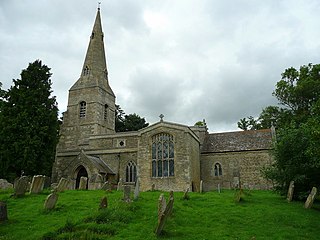
Winwick is a village and civil parish in Cambridgeshire, England. Winwick lies approximately 10 miles (16 km) north-west of Huntingdon. It is a crossroads village on the B660 near Hamerton. Winwick is situated within Huntingdonshire which is a non-metropolitan district of Cambridgeshire as well as being a historic county of England.

Waresley is a village and former civil parish, now in the parish of Waresley-cum-Tetworth, in Cambridgeshire, England. Waresley lies approximately 11 miles (18 km) south of Huntingdon and 5 miles (8 km) south-east of the town of St Neots. Waresley is situated within Huntingdonshire which is a non-metropolitan district of Cambridgeshire as well as being a historic county of England.
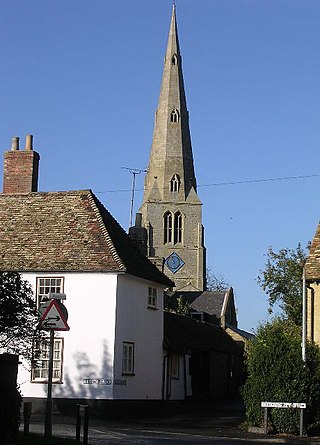
Catworth is a village and civil parish in Cambridgeshire, England. Catworth lies approximately 9 miles (14 km) west of Huntingdon. The civil parish covers an area of 3,094 acres. Catworth village has two parts, Catworth, at the top of the hill, and Little Catworth, at the bottom. Catworth is situated within Huntingdonshire which is a non-metropolitan district of Cambridgeshire as well as being a historic county of England.

Somersham is a village and civil parish in Cambridgeshire, England. Somersham lies approximately 9 miles (14 km) east of Huntingdon and 4 miles (6 km) north of St Ives. Somersham is situated within Huntingdonshire which is a non-metropolitan district of Cambridgeshire as well as being a historic county of England.

Hamerton is a village in and former civil parish, now in the parish of Hamerton and Steeple Gidding, in Cambridgeshire, England. Hamerton lies approximately 8 miles (13 km) north-west of Huntingdon. Hamerton is situated within Huntingdonshire which is a non-metropolitan district of Cambridgeshire as well as being a historic county of England. Hamerton Zoo is on the north side of the village. The village has a church dedicated to All Saints. In 2001 the parish had a population of 87.
Ashley is a village and civil parish in the East Cambridgeshire district of Cambridgeshire, England, about 4 miles (6.4 km) east of Newmarket. The modern village consists of the two ancient parishes of Ashley and Silverley. Ashley covers 2,250 acres (910 ha) and in the 2011 census had a population of 749. Ashley is in the electoral area of Cheveley ward.

Conington is an English village and civil parish in the Cambridgeshire district of Huntingdonshire. Conington lies about 10 km south of Peterborough and 3 km north of Sawtry. It is within earshot of the A1(M), part of the Great North Road, which follows the course of the Roman Ermine Street. Conington lies within Huntingdonshire, which is a non-metropolitan district of Cambridgeshire and one of the historic counties of England.

Horningsea is a small village north of Cambridge in Cambridgeshire in England. The parish covers an area of 2.6 square miles. It lies on the east bank of the River Cam, and on the road from Cambridge to Clayhithe. The nearest railway station is Waterbeach, 1+1⁄2 miles (2.4 km) away.

Fen Ditton is a village on the northeast edge of Cambridge in Cambridgeshire, England. The parish covers an area of 5.99 square kilometres (2 sq mi).
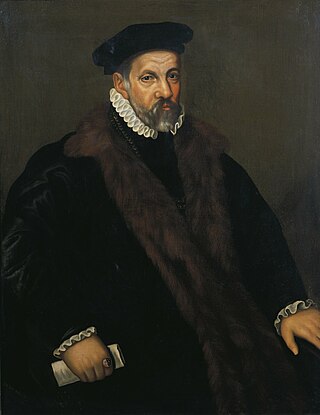
Thomas Wilson (1524–1581), Esquire, LL.D., was an English diplomat and judge who served as a privy councillor and Secretary of State (1577–81) to Queen Elizabeth I. He is remembered especially for his Logique (1551) and The Arte of Rhetorique (1553), which have been called "the first complete works on logic and rhetoric in English".
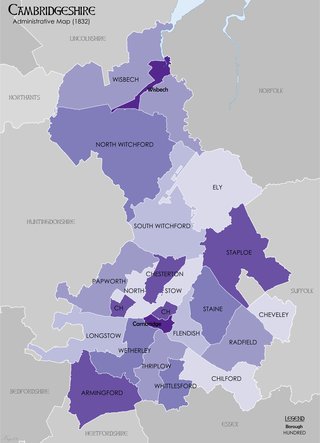
Between Anglo-Saxon times and the 19th century Cambridgeshire was divided for administrative purposes into 17 hundreds, plus the borough of Cambridge. Each hundred had a separate council that met each month to rule on local judicial and taxation matters.
Cheveley Castle was a medieval fortified manor house near Cheveley, Cambridgeshire, England.

The Hinckford Hundred was one of the 19 historic Hundreds of Essex, covering an area of approximately 110566 acres it lies to the north of Essex occupying most of what is now Braintree district.